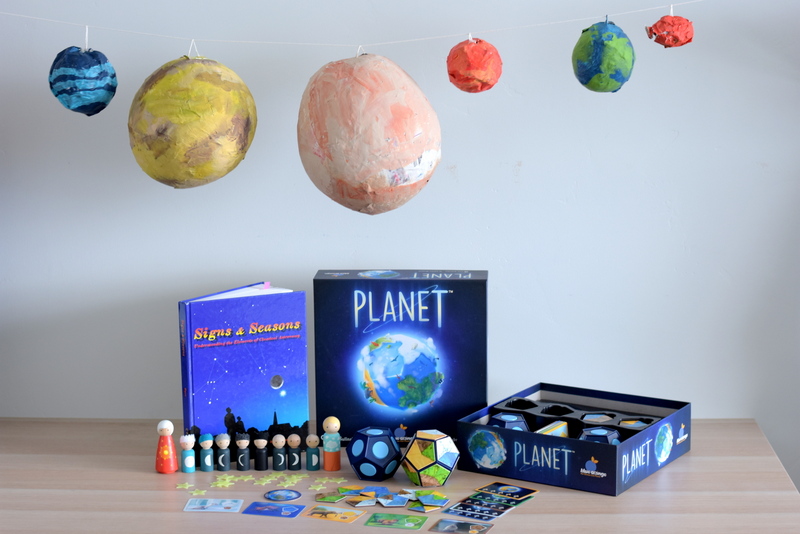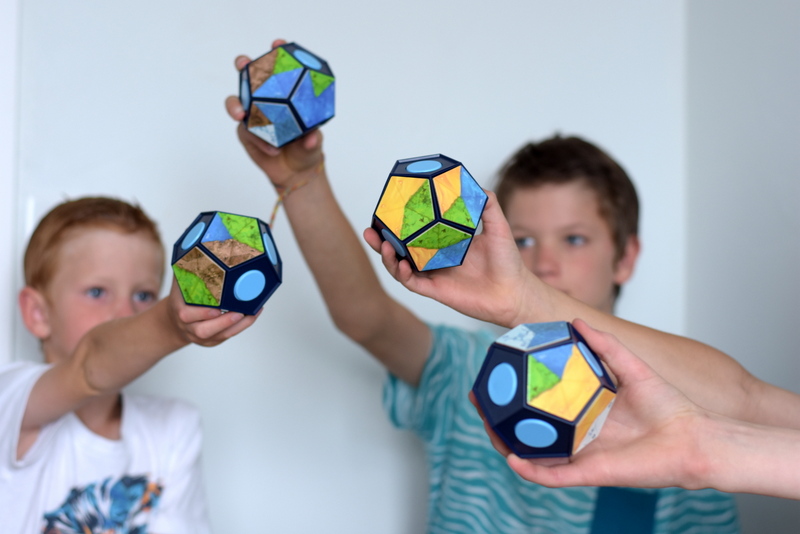If you’ve been here long, you’ll know that our family loves board games, and one of my favorite homeschool tricks is to pick a board game and build a unit around it.
This week we took a trip through the solar system and learned all about the planets, made paper mache models of most of them, noticed the moon phase we’re in and what phases will come next, read about stars and constellations, and played this Planet board game a dozen times.
Next week we’ll continue our unit by looking at all the different kinds of habitats there are on the earth and what kinds of animals live in each, as that’s what this game is mostly about.
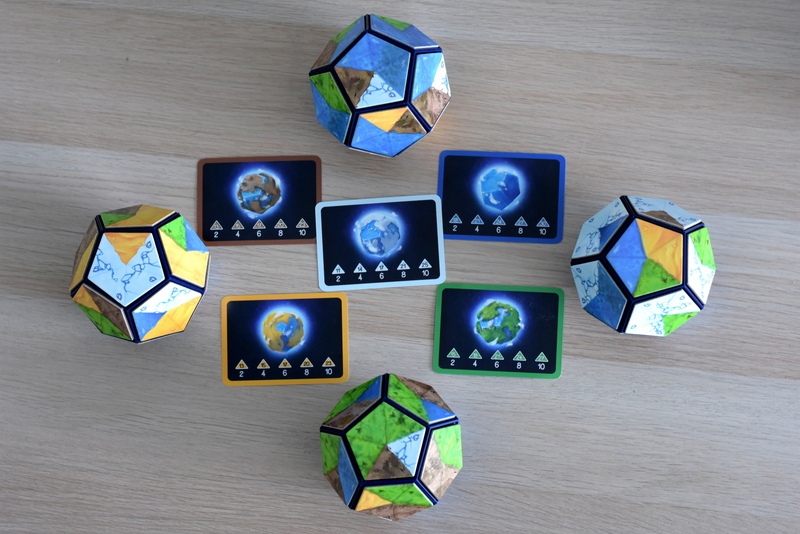
Each player starts the game with a Planet Core and one of the 5 Natural Habitat objective cards (mountain, desert, forest, ocean, and glacier).
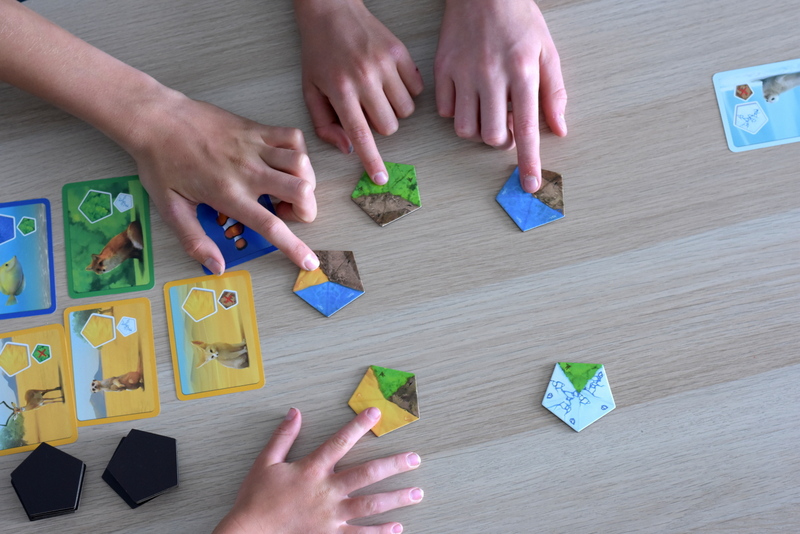
On each round, every player takes a continent tile and adds it to their planet core. The player to do this first rotates each round.
The goal of the game is to get as many of your Natural Habitat continent tiles on your core because the more you have at the end of the game, the more points you get.
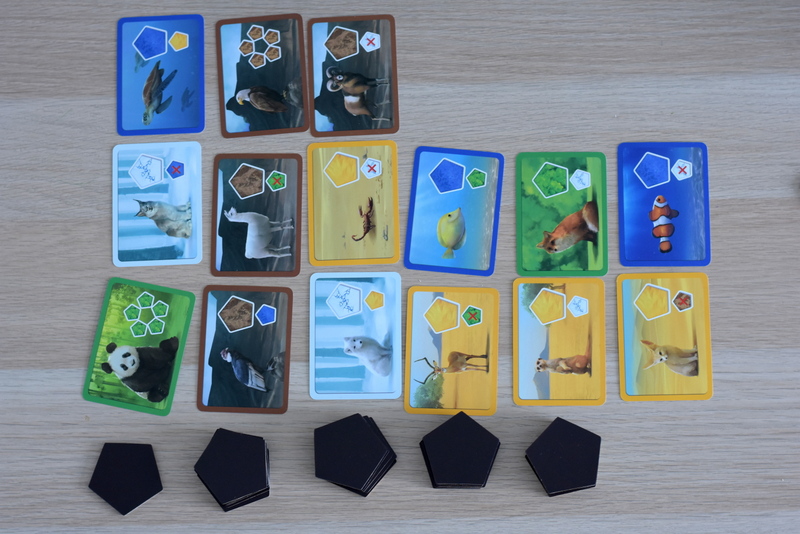
You also get points by forming hospitable regions for animal life to flourish. For example, on this round, the cards in the column at the very right are won by the player with the largest desert region (indicated by the yellow hexagon) that DOES NOT touch a mountain range (indicated by the crossed out brown hexagon) and the other card will be won by the player with the largest ocean region that does not touch a glacier region.
Placing the continent tiles in the most strategic positions on the core is tricky! Players have to be looking ahead at what Animal Cards are coming up and try to choose and place tiles accordingly. But you also have to get as many of your own natural habitat tiles too, and balancing both those objectives can be tough!
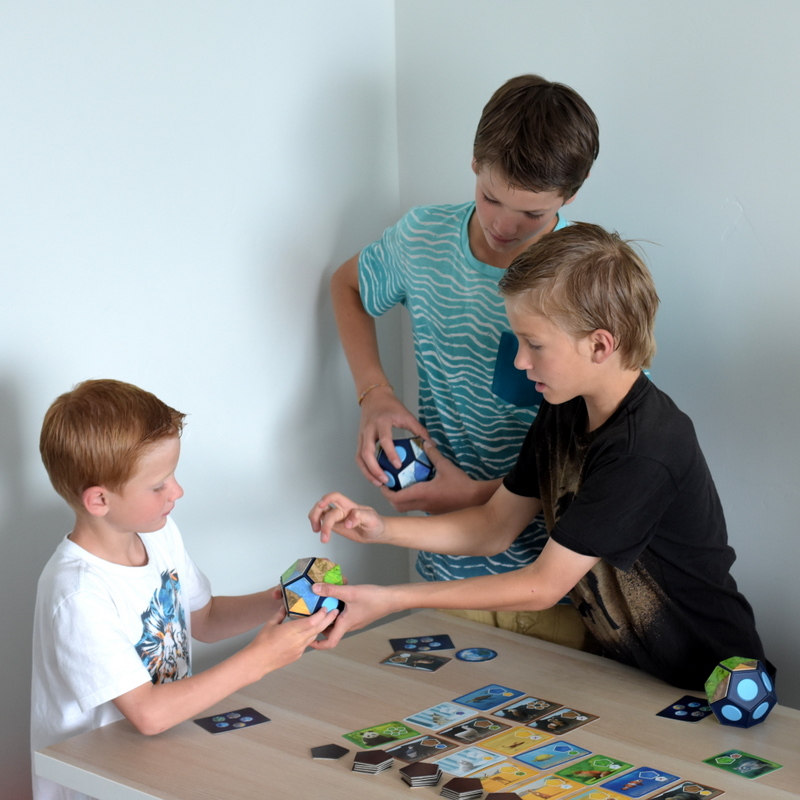
At the end of every round, players count up their regions and what they are or are not adjacent to to decide who gets the animal card.
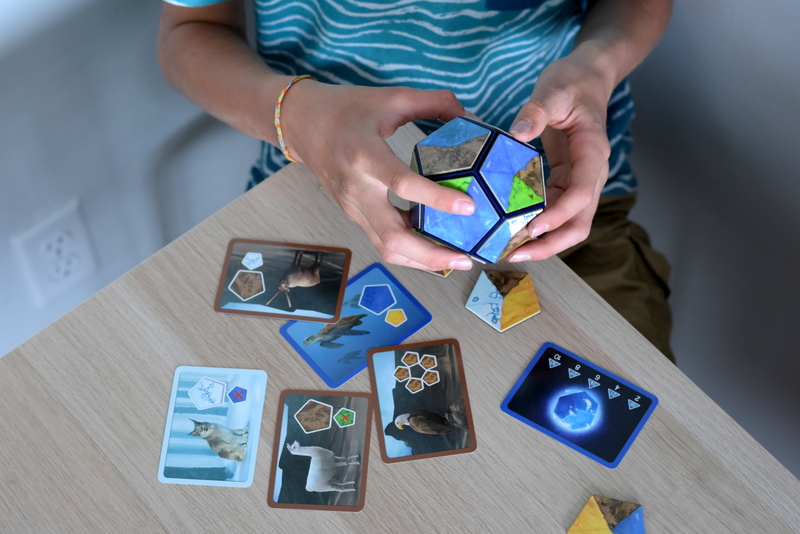
At the end of the game, the winner is the player with the most animal card points and natural habitat tiles.
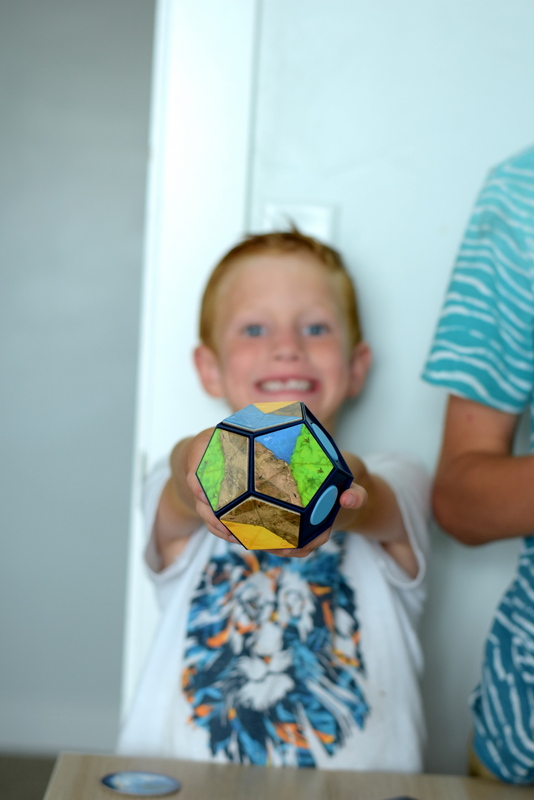
This is a great family game – it’s different every time and players can experiment with different strategies to see what works best, although there’s just enough chance to make any strategy good enough to win.
This is what my kids love about it:
- 13yo – strategizing to create the best habitat regions for the most animals to live on
- 11 yo – the magnetic tile pieces
- 8 yo – collecting animals and getting points
The concept of this game is great for a homeschool unit, there are so many aspects of a planet to study, and we are excited to dive in deeper next week all about habitats and continents and animal adaptations. We could spend 2 months on all the ideas and topics connected to this game! Creating a science unit around Planet has been fun for everyone, sometimes something as simple as a theme is enough to light the fire in a child’s brain and imagination and spark their curiosity to learn more on their own.
This is another favorite from BlueOrange games, one of our favorite sources for great games! We give this game 5 bright shiny stars and recommend it to your family!
{Thanks to Blue Orange for sponsoring this review. I received the game free of charge to facilitate this review, but all opinions and ideas are my own.}
